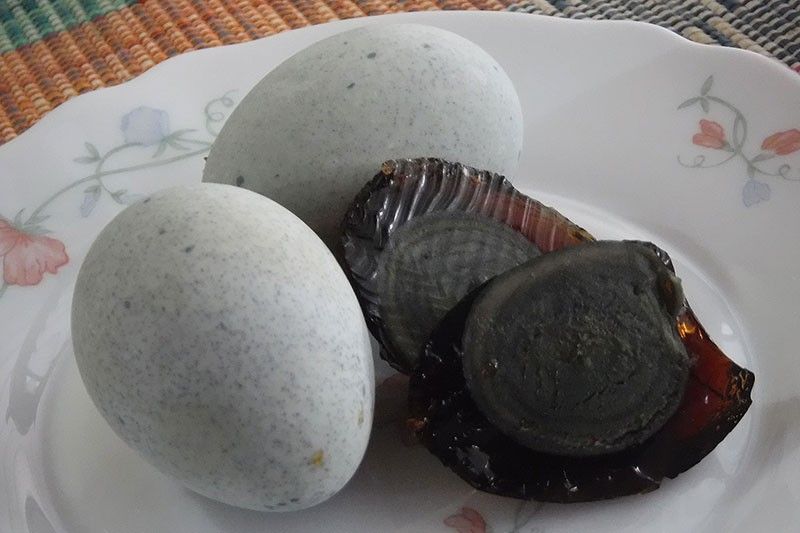Creamy treat: Ways to enjoy Century Eggs

MANILA, Philippines — If you’ve had a lauriat lunch or dinner in an exquisite Chinese restaurant, you would have already encountered, if not tasted, Century Eggs.
These black eggs are actually duck or chicken eggs that have been “processed” to become Century Eggs. They are a curious lot, a Chinese delicacy, that look like regular eggs but with the yolk in dark green to brownish black. They often have creamy, wet-like consistency.
In Chinese restaurants, Century Eggs are sliced or cut into wedges and served as part of the cold cuts platter course during lauriat service when there are events such as weddings. For regular a la carte service, you can order a cold cuts platter or a simple combination of century eggs and jellyfish. The latter is also a great treat for the palate.
Also called Pi-dan and Hundred-year-old Eggs, Century Eggs do not take that long to make. Duck or chicken eggs are wrapped in a mixture of clay, salt, ash, quicklime and rice hulls for several weeks or months, depending on the preservation method. The clay hardens around the eggs.
Due to the presence of hydrogen sulfide and ammonia, the yolks turn dark green to black, take on a creamy consistency and develop a strong flavor. The whites become salty, translucent dark brown to black, and jelly-like. Alkaline salt gradually raises the pH of the eggs to 9 to 12 during the curing process and breaks down some of the complex proteins and fats and produces smaller compounds of flavor.
Some century eggs develop small white patterns that look like pine branches on the egg whites that have turned black. These are regarded as of superior quality than non-patterned ones.
While you used to get Century Eggs only from Chinese delis and groceries, now you can buy them from major supermarkets. They also used to be just available with the hardened alkaline clay mixture still wrapped around each egg, now you can get them with the clay mixture removed and cleaned. You will easily recognize them, as the shell of century eggs is light grayish white with a few dark speckles all over them.
Ways to enjoy
Century Eggs are said to originate from Hunan, China, some 600 years ago, back in the Ming Dynasty.
Today, Century Eggs are produced using both traditional and modern methods for culinary purposes. They are mostly present in Chinese cuisine, where they are enjoyed as is, like regular boiled eggs that you simply bite into, or cut into slices or wedges and served with cold cuts and jellyfish.
In Central China, they are just sliced and drizzled with black vinegar and enjoyed that way as a side dish. In Shanghai, chopped century eggs are mixed with chilled tofu. The Cantonese wrap chunks of Century Eggs with slices of pickled ginger root.
You can also enjoy them as topping for congee, along with fish fillet or lean pork, cut up Youtiao (fried dough sticks or Bicho-bicho) and chopped spring onion. They can also be cut into chunks and stir-fry with vegetables like the Taiwanese do. My elder sister has a recipe of Three-colored Eggs that has century eggs and salted eggs rough chopped into cubes and steamed in beaten regular eggs.
RELATED: How to perfectly boil egg: 7 chefs share their secrets



















